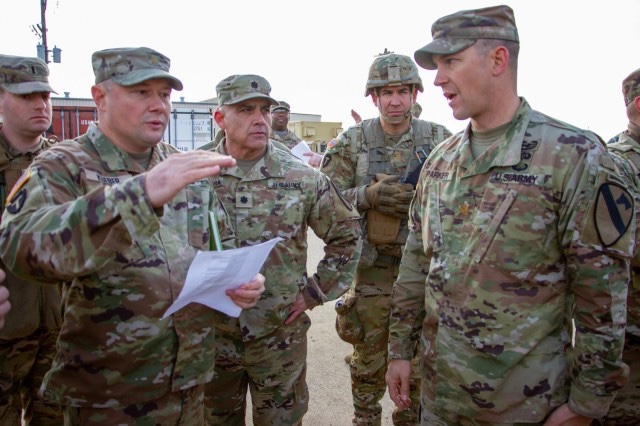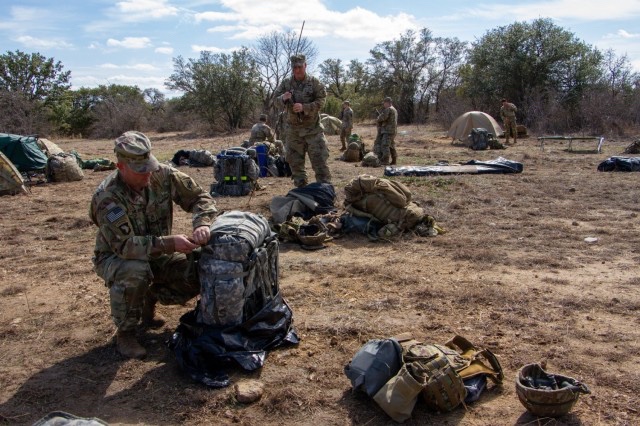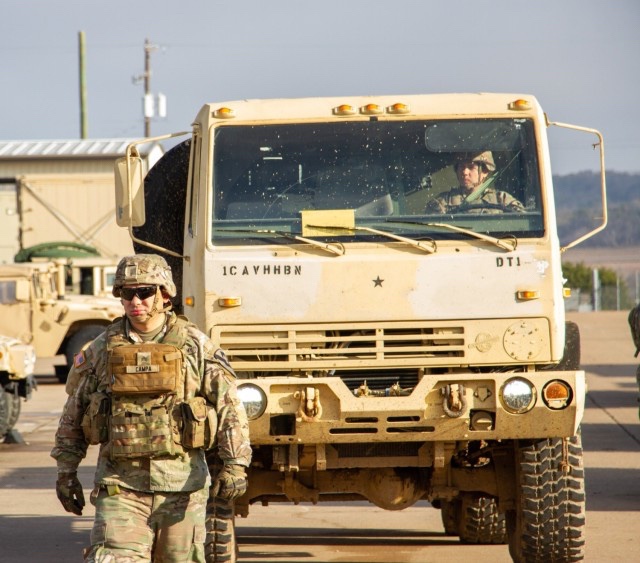FORT HOOD, Texas — 1st Cavalry Division staff and subordinate brigades conducted a command post exercise at Fort Hood over the past in early February to test warfighting functions and refine processes ahead of a Warfighter exercise planned for this spring.

“It is absolutely critical to maintain the ability to deploy to multiple locations and stay in the fight, because failure to do so will diminish all warfighting capabilities,” said Sgt. Maj. Yolonda Jordan, division sustainment non-commissioned officer in charge, 1CD.
A command post exercise, or CPX, is a field training exercise that prepares units to fight in a large and complex environment. The exercise enables the commander to see if the staff’s processes and procedures work and identify what needs to change before being called to the fight.
“This CPX allows us to better prepare and execute our mission objectives,” Jordan added.
This is the second CPX iteration for the division as they prepare for their culminating exercise where the division will be evaluated in their proficiency, communication and warfighting capability in Warfighter 23-04 scheduled this spring.
“This is absolutely critical, you have to know the team that you work with,” said Maj. Mark Mckinney, division sustainment deputy officer, 1CD. “This sets the stage, so everybody gets their job done right so we don’t have to learn the hard way in combat.”

Testing the division’s ability to communicate as an effective warfighting team is vital, as the main command post and rear command post the staff works to effectively communicate and coordinate while also providing support towards subordinate units. Without synchronizing communication methods, the division would be unable to guide the fight.
“All elements of our division must be ready to contribute to the fight at hand,” said Jordan.
Projecting the First Team’s firepower includes augmenting the division with the right personnel.
“The goal is for us to be ready to support the “First Team” in training so that when the time comes to deploy we are not meeting for the first time,” said Maj. Robert Kaueber, deputy commander, of the Main Command Post Operational Detachment, Texas Army National Guard.

The exercise is just a steppingstone to test current tactical standard operating procedures and identify battle drills that work and things that no longer work so they can be updated before the Warfighter and potential deployments in the future.
It’s important for the staff to be able to interact with subordinate units across the battlefield and it’s also extremely important that everyone understands how to use command and control systems designed for sharing battlefield updates and communicating at different echelons.
“It’s always important to remember if you’re going to win the fight, every piece of equipment has a person behind it, whether it’s a weapon system, communication system, or planning tool,” said Maj. David Christensen, deputy command chaplain, 1CD. “If we don’t make sure our people are taken care of physically, mentally, and spiritually none of those systems matter. Conversely, if we spend a little more time taking care of our people, that effort can make the difference that ultimately wins the fight.”
By SGT Elliot Alagueuzian

